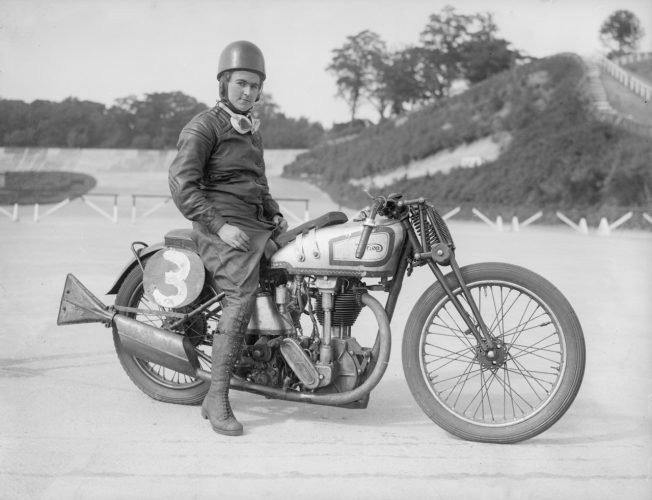Another article on Beatrice Shilling
Beatrice Shilling - Revolutionising the Spitfire
July 1935: Miss Beatrice Shilling sits astride her Norton motorcycle at the Brooklands race track.
Born 8 March 1909 (now coincidentally International Women’s Day), Beatrice “Tilly” Shilling was considered one of the great engineers of her time.
When she was young she would ask questions about engines and would spend her pocket money on certain practical tools for fixing things (penknife, a glue pot and an adjustable spanner). She also enjoyed playing with Meccano.
Beatrice left school in her teens and took up an apprenticeship with Margaret Partridge in her electrical engineering company.
She was one of two women studying engineering at The University of Manchester in 1932 (the first year the course allowed women to join). After completing the course Beatrice took up motorcycle riding, eventually gaining a Gold Star for outstanding performance at Brooklands; reaching 106mph by using a revolutionary supercharger.
1936, the Royal Aircraft Establishment (RAE) in Farnborough, Hampshire, hired Beatrice; the RAE later became a leading specialist in carburetors.
Beatrice Shilling is most known for her engineering ideas for the Rolls-Royce Merlin engine in 1940 fighter planes. When either the Spitfire or Hurricane would perform a nose dive the engine would cut out due to the flooding of the carburetor.
Shilling innovated a small metal disk, similar to a washer, which would regulate the fuel flow, resulting in prevention of stalling. This invention was named the ‘RAE restrictor’, however while touring RAF bases and meeting various officers it soon got the nickname ‘Tilly’s orifice’, for various reasons other than it has a small puncture in the centre of the disk.
On distributing this, the RAE restrictor became integral to the RAF aircraft. Shilling was then seen and celebrated as a crucial contributor to the eventual victory, receiving an OBE in 1948. Continuing to work for the RAE until her retirement in 1969, she also remained active in the racing and aerospace engineering communities until her death in 1990, age 81.
Although Beatrice Shilling was key to the successful function of Merlin engines, she remains one of the little-known figures in history, people are unaware of her achievements towards the war effort, racing community and even women’s empowerment.
Here’s to the thrill-seeking, freewheeling gear-head, Tilly.



